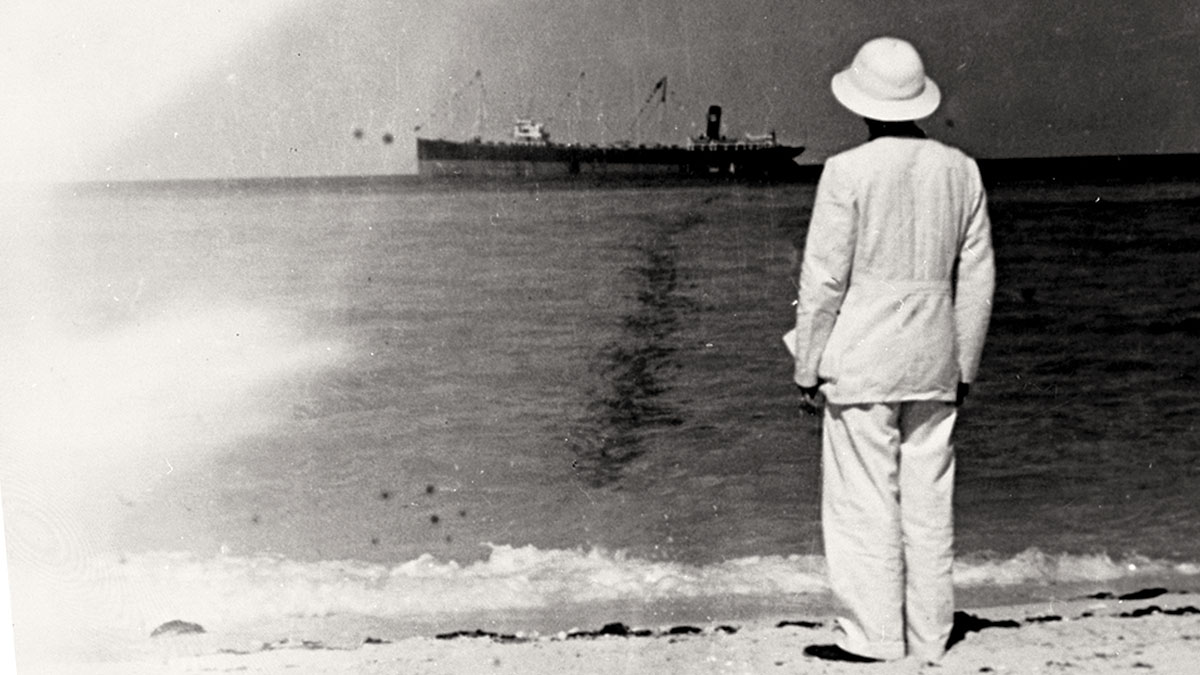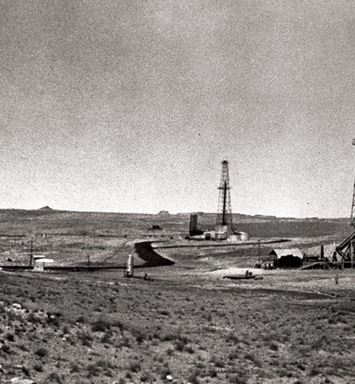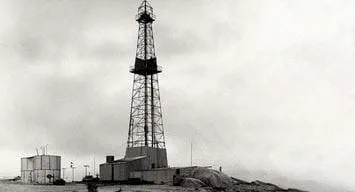COMPANY ANNIVERSARY
Part 2: On March 4, 1938, Dammam Well-7 started production

By March 08, 2021
Despite the success, the next two years were incredibly difficult. In the second of three parts, the author reveals the enormous tragedy of the Well-12 disaster.
On July 8, 1939, just two months after the first tanker of Saudi crude oil had left Ras Tanura under the watchful gaze of King Abdulaziz, morale was high in the Dhahran camp.
Saudis and Americans worked side-by-side, knowing they were developing possibly the most exciting oil exploration site in the world.
The camp had been set up six years earlier and a significant number of American wives and children had been living there for two years. Hundreds of Saudis were being employed and the local economy was buoyed by the enormous growth in activity.
No one knows exactly what caused the explosion at Well-12.
The crew were preparing the test-perforating gun when there was an enormous explosion, heard everywhere in the camp, and moments later, flames shot 200 feet into the air. Oil at tremendous pressure, coming from a mile down, was feeding the fire at the rate of about 8,000 barrels a day. The derrick melted and collapsed after roughly 10 minutes.
The acting resident manager quickly realized that the fire could cause the whole oil field to lose pressure and channel water into the oil zone, which would be financially disastrous. It was even possible that the well could spray burning oil and destroy the camp, which would be even worse.
But he had no specialist firefighters to turn to.
Amateurs to the rescue
The company called for asbestos shields and suits from its sister operation in Bahrain and organized themselves into teams who, incredibly, advanced right up to the heart of the fire, with water hoses spraying over them, and devised a series of attempted fixes for the next seven days, each time reducing the size of the flames.
By this time, the world-famous firefighter from Texas, Myron Kinley, had announced that he was preparing to fly the Atlantic (a daring feat in those days), and make his way to Dhahran to kill the fire.
As the professionals prepared themselves, the amateurs in Dhahran tried one last desperate ploy to fit a hot tap onto the bypass line, which would, if successful, force mud down into the well. They watched anxiously as the bit broke through the pipe — and the flames disappeared instantly.
Fire extinguished, hole full of mud. Professional firefighters not needed.
— Telegram to the head office in California
The 10 days of hell were over. Unbelievable courage and extraordinary ingenuity had saved the oil field.
This was a defining moment in the early history of our company. Every employee and dependent was shocked and saddened by the event. Many procedures were overhauled and a culture of safety became, and remains to this day, a vital part of daily working life.
In a very real sense, Dhahran came of age in July 1939.





